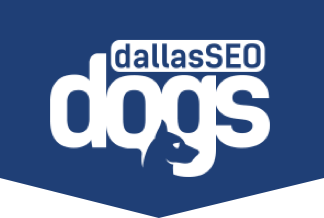What Are the Current SEO Trends in 2023? Part I

The changes never stop with content creation and search engine techniques! That’s why staying informed and adaptable are so vital. Let’s look at some trends and topics resulting from the shifts and challenges for search engine optimization (SEO) professionals in the coming years.
Authorial Authority: Putting the “E” in E.E.A.T.
The searchability concept, “Expertise, Authoritativeness, and Trustworthiness,” has long been a pillar of SEO. But it’s time to rethink what the “E” truly means in today’s digital landscape: Expertise encompasses diverse experiences and insights.
Likewise, authorship isn’t just a byline; it’s a mark of trust and credibility. As search engines refine their algorithms, that authority is pivotal in determining content rankings. Establishing and nurturing authorial authority is a must for content creators.
A New Evolution of Competitor Analysis
Competitor analysis also now extends beyond mere observation and spying on your rivals. It’s become a more strategic endeavor aimed at first gaining insights into the competitive landscape, understanding the strengths and weaknesses of your competitors, and finally leveraging this knowledge to enhance your SEO and content strategies.
Learning from Their Strategies
One of the primary objectives of competitor analysis is to dissect and comprehend the strategies your competitors use. This involves studying their content, keywords, on-page optimization techniques, backlink profiles, and social media presence. This will offer a more comprehensive view of their approach to SEO and content marketing.
Identifying Gaps and 10X Opportunities
Competitor analysis enables you to identify the gaps where your rivals might fall short. They could be related to content quality, user experience, keyword targeting, or technical SEO issues.
These differences and deficiencies in their strategy offer opportunities to improve and differentiate.
However, the most significant aspect of competitors is using the insights to create a strategy that can outperform your competitors in search. This means making informed decisions on content creation, keyword selection, backlink acquisition, and overall SEO tactics.
Streamlining with Automation
Staying ahead of the curve requires strategic thinking, creativity, and technical prowess. Automation tools are emerging as indispensable assets for SEO professionals, offering suites that streamline our daily tasks and enable us to make more informed decisions and drive better results.
Handling Routine Tasks
SEO involves routine tasks, from keyword research and on-page optimization to monitoring website performance and managing backlinks. Automation tools are excellent for these repetitive, time-consuming activities. For instance, they can automatically scan websites for broken links, generate XML sitemaps, or schedule content updates.
Automating these routine tasks gives SEO professionals valuable time to redirect toward more strategic initiatives like devising content strategies, exploring new keyword opportunities, and analyzing competitors.
Tracking Performance in Real-Time
Monitoring the performance of our SEO efforts is critical to understanding what’s working and what needs optimization. Automation tools provide real-time data tracking and reporting, including insights into keyword rank, organic traffic, click-through rates (CTR), and more.
Access to up-to-the-minute data means an SEO can swiftly identify shifts in site performance, allowing for quick adjustments to maintain or improve rankings. This level of agility is especially invaluable in a search engine landscape where the algorithms can change rapidly.
Suggesting Improvements and Opportunities
Modern automation tools aren’t just passive data aggregators. They’re increasingly intelligent, offering proactive suggestions for SEO improvements. With data analysis and machine learning (ML) algorithms, these tools identify potential opportunities for change, like keyword and content gaps or technical issues that may be hindering performance.
For instance, an automation tool might recognize a specific keyword is gaining popularity in queries related to your industry. It can even then recommend creating new content or optimizing existing pages to target that keyword, helping you stay at the forefront of content and SEO.
Enhancing Strategic Thinking and Creativity
By offloading routine tasks and providing actionable insights, automation tools let SEOs redirect focus toward higher-level strategic thinking and creativity. We can go further in content creation, devising innovative strategies, and experimenting with new engagement methods.
With the time saved from automating repetitive tasks, an SEO can brainstorm and execute creative content campaigns, explore emerging trends, and build a more substantial online presence.
Scaling SEO Efforts
Automation tools are particularly valuable when it comes to scaling SEO efforts. Whether you manage a single website or a portfolio of clients, these tools ensure consistency and efficiency in your strategies. They allow you to apply best practices across multiple projects, reducing the risk of oversights or human error.
Automation tools can be a lifeline for SEO agencies, letting us provide high-quality services to clients at scale — without compromising on quality.
New Developments in Image Optimization
We’re currently in a visual era of our digital content. This shift is attributable to several factors:
Changing User Behavior
Visual content draws in users: images, videos, infographics, interactive graphics. These formats are more engaging and digestible, making them a preferred choice.
Social Media Dominance
Social media platforms like Instagram, Pinterest, and TikTok have cultivated a culture centered around visual content. The immense popularity of these platforms has amplified the importance of visuals throughout online communication.
Enhanced Connectivity
The proliferation of high-speed internet and the prevalence of mobile have made accessing and sharing visual content seamlessly easy, making the image the universal online language.
Aesthetics Matter
Visual appeal is the first and most immediate factor to grab a user’s attention. Images should be high-quality, well-composed, and visually pleasing. Blurry or poorly lit images will deter users and harm your brand.
For example, an e-commerce website showcasing its products with clear, professional images is more likely to convert than low-quality visuals.
Relevance is Key
Beyond aesthetics, images must align with their accompanying content and context. Whether a blog post, product page, or social media post, images should complement the message and provide value to the user.
Suppose you’re writing a travel blog about a specific destination. In that case, you want to include images of that location’s landmarks, cuisine, and culture — anything that enhances the reader’s experience and reinforces the content’s relevance.
Consistency Builds Brand Identity
Consistency in visual elements — colors, styles, themes — helps build a strong brand identity. Guests should be able to recognize your brand through its visual content alone. This consistency extends to logos, tone, and even watermarks on images.
When users consistently encounter images with your brand’s distinctive colors and logo, it reinforces brand recognition and trust.
Stay Tuned With Dallas SEO Dogs for More Useful Info
Staying updated on these evolving trends is crucial for content creators and SEO professionals. Adapting to changes in web crawling, understanding shifting CTR dynamics, and harnessing the potential of AI in content creation can lead to more effective strategies and better outcomes in the ever-changing digital landscape.
Read on next week for the conclusion of this report, and contact Dallas SEO Dogs immediately if you’d like to see consistent growth. Your traffic, engagement, and conversions are in good hands thanks to our brilliant SEO specialists and our suite of tested techniques for your online and SEO success.
